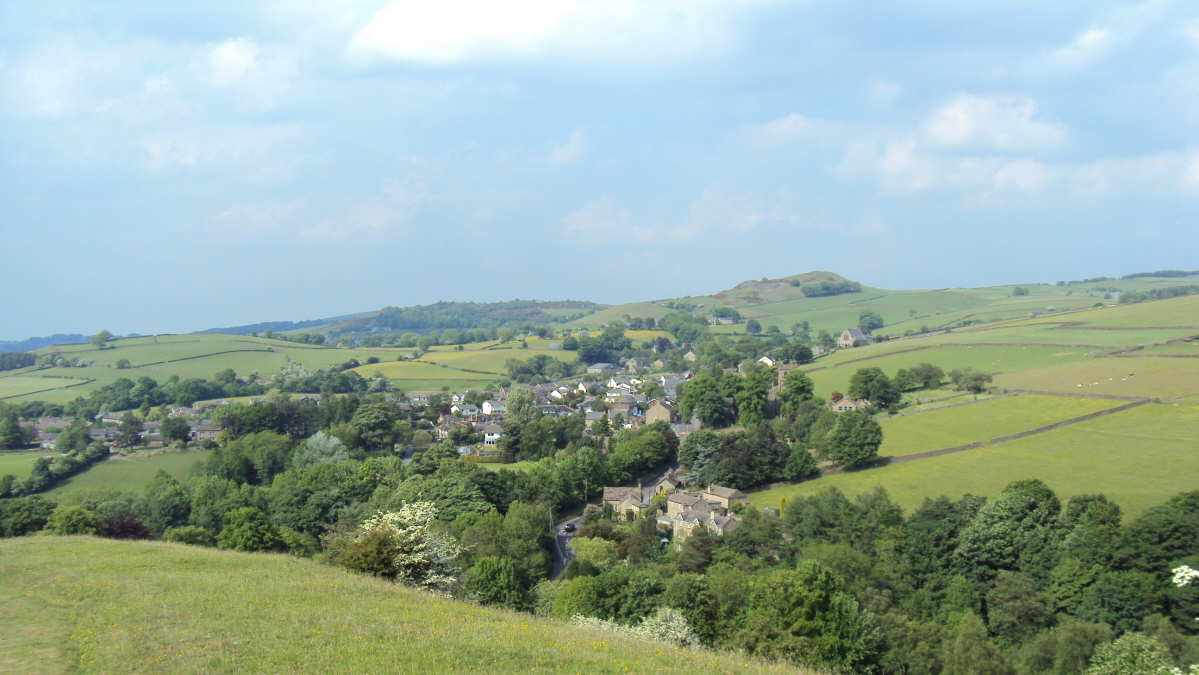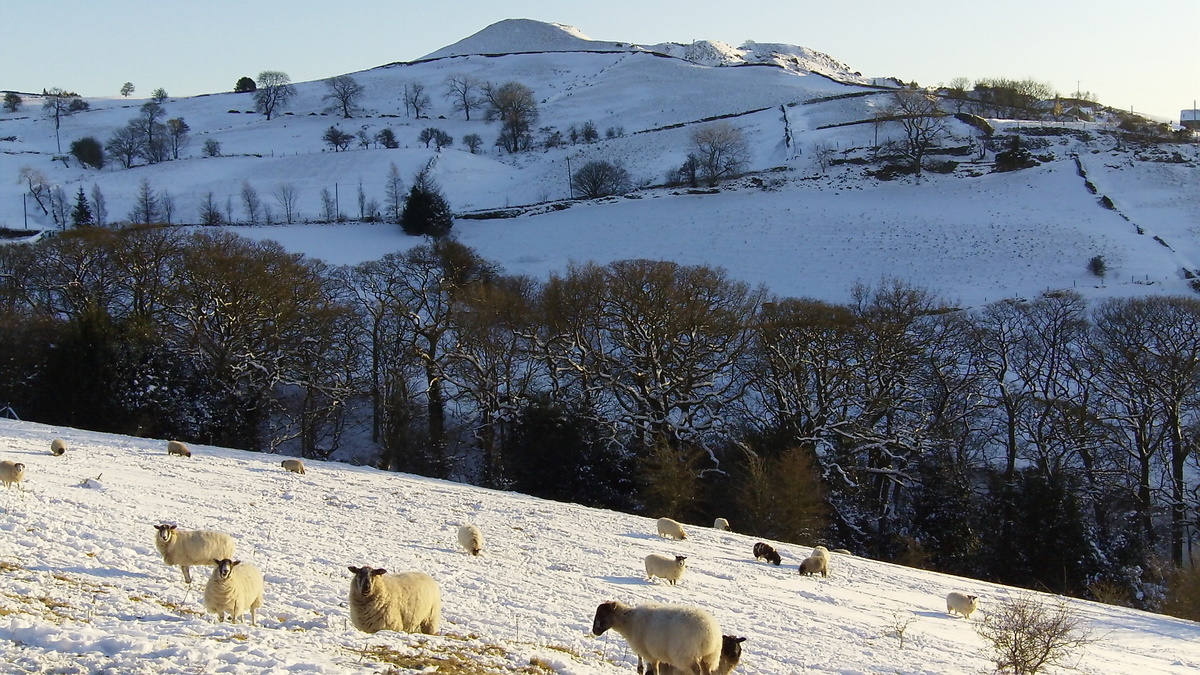Welcome
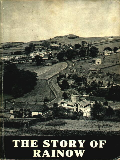
This site records some of the interesting history, institutions, customs and characters of the village of Rainow, Cheshire.
This web site is only a pathfinder, the documents listed in the Bibliography below are primary sources and contain vastly more information. Some documents are available for download.
Geography
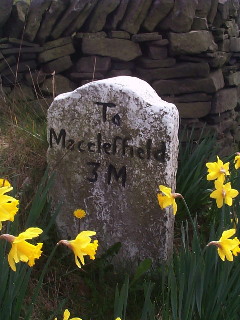
Rainow lies in the foothills of the Pennines straddling the Cheshire boundary of the Peak District National Park. The village gets its name from the Old English Hraefn Hoe meaning Ravens' Hill, an indication that the area was once a wilderness. The closest town is Macclesfield.
The western boundary runs along the crest of Kerridge hill (Key Ridge from the Old English Caeg Hrycg). The hill has a maximum altitude of 313 metres, but descends steeply into the River Dean valley. The heart of the village lies to the east of the river. Moving further eastward, through Gin Clough to Saltersford then on to Pym Chair the land begins to rise again, eventually to over 1,600 feet along The Tors at the eastern boundary. The village is bounded to the north west by Bollington, to the north by Pott Shrigley and to the south by Macclesfield Forest. The B5470 is the principal highway through the village.
The hamlets of Brookhouse, Bull Hill, Calrofold, Cester Bridge, Charles Head, Eddisbury, Four Lane Ends, Gin Clough, Gorseybrow, Harrop, Hedgerow, Hough Green, Hough Hole, Ingersley, Jenkin Chapel, Kerridge End, Lamaload, Nab End, Pedley Fold, Plungebrook, Redmoor Brow, Saltersford, Tower Hill, Walker Barn, Waggonshaw Brow and Yearns Low all lie within the parish boundary. Each name tells a tale.
Click here to see the parish map.
Click here to see an aerial map.
Early History
There is evidence of a late Neolithic and Bronze Age (c. 2,500 B.C.) presence in the environment. Standing stones (megaliths) still stand at Washpool and Pike Low. Their original purpose was probably to signpost tracks across undeveloped ground that once formed part of a ridge way that ran the length of England. Barrows (tumuli) can still be seen in the landscape at Black Rock, Yearns Low, Blue Boar, Further Harrop and Charles Head.
Prior to the Norman Conquest, East Cheshire was primarily oakwood forest and remnants of ancient sessile oak remain at Thornset Farm. After the county was harried and subdued during the winter of 1069-70, William the Conqueror granted it to his nephew, Hugh d'Avaranches who became the first Earl of Chester. The Domesday Book of 1086 includes the Manor of Macclesfield and its woodland, Macclesfield Forest. After the Civil War the Forest, being Crown Lands, was confiscated by the Parliamentarians who then divided up the ground between their supporters. Many of the local farms were established during this period. After the Restoration the Forest returned to the King's Steward, but the distribution of land by grant, lease or purchase continued.
Houses and People
The first recorded dwelling in Rainow is the One House, by the Buxton Road just a quarter of a mile inside the parish. This dwelling was mentioned as part of the grant made to Richard Davenport when he was created a Forester around 1150. In the late 16th Century it passed into the Hulley family who lived there for four hundred years. Five Hulleys were Mayor of Macclesfield and the family was a noted benefactor to the Church, the Poorhouse and the National School.
In 1380 Rainow had 30 houses and sometime before 1416 a corn mill was built.
Saltersford Hall, described in Bagshaws Directory of 1850 as a "curious old mansion", lies a quarter of a mile south of Jenkin Chapel. The hall was built in 1595 as the family seat of the Stopford family; one of whom, James Stopford, was a lieutenant in the army who in 1762 was made an Irish peer as the 1st Earl of Courtown. In 1796 his son was created Baron Saltersford in the Peerage of Great Britain and this title gave him and his descendants a seat in the House of Lords. The family has a long and distinguished record of service in the army, navy and government. Patrick Courtown, the current and 9th Earl, is actively engaged in government as one of the 90 hereditary peers elected to serve in the House Of Lords.
In the Georgian and Victorian times rows of cottages were built at Brookhouse, Chapel Lane, Church Lane, Sugar Lane, Tower Hill and Washpool.
Twentieth century development greatly increased and diversified the housing stock. The Round Meadow estate was built in 1928 on the ground between Taylor Lane and Chapel Lane. The Millers Meadow estate was built in the 1960s between Chapel Lane and Hayles Clough.
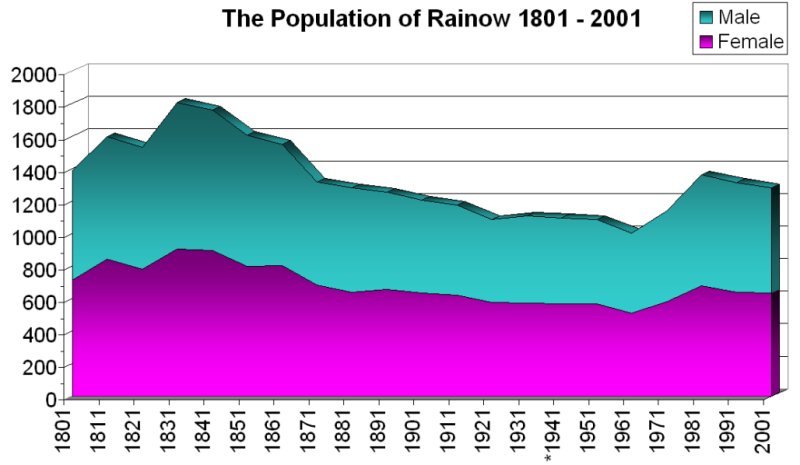
Here is an illustration of how the population of Rainow has changed over two centuries.
Click the graph to see the basis data along with the number of recorded households, courtesy of The Office of National Statistics.
It is interesting to see that the number of people per household has declined from a peak of 5.6 in 1831 to 2.6 in 2001.
Note that there was no national census in 1941. A bit of bother abroad apparently.
Churches and Chapels
Anglican Chapel
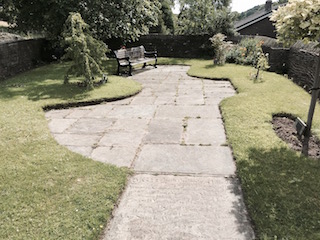
The Chapel-Of-Ease built in the early 18th century was probably the first dedicated place of worship in the village. It was sited at the top end of what became known as Chapel Lane and appears to have been in a permanent state of disrepair. And since the chapel was not consecrated people still had to walk to the parish church at Prestbury to be married. Once the National School was built, church services were held there and, in 1844, the chapel was demolished with part of the site made into a graveyard. The demolition was reported in Bagshaw's Directory of 1850. The chapel bell, dated 1724, was sent to Jenkin Chapel to be melted down with Jenkin's cracked bell to cast one good bell for Saltersford.
Jenkin Chapel
Jenkin Chapel was built by voluntary contribution in 1733 and a small tower was added in 1754-55. It is constructed of the local gritstone and has an outside flight of steps leading to a gallery.
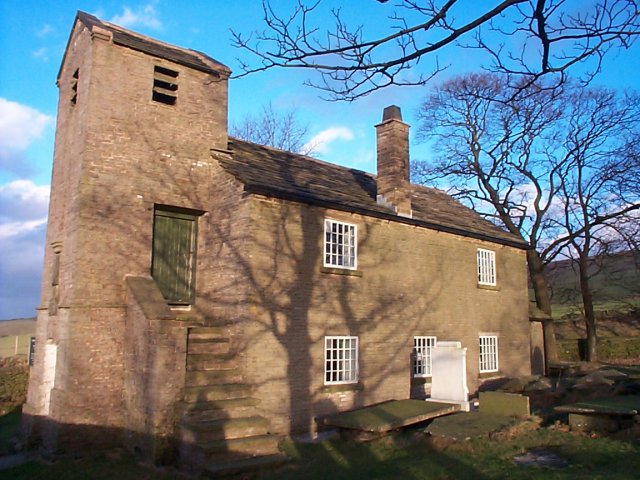
The church was originally dedicated to St. John the Baptist, but when it was eventually consecrated in 1894 it was re-dedicated to St. John the Evangelist.
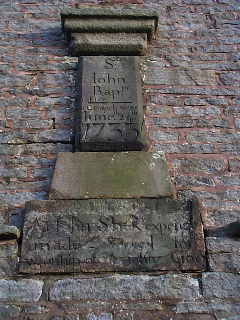
There has always been some debate locally as to the naming of Jenkin, however recent research has identified a very plausible answer. When people began to adopt surnames, they often took their father's name, therefore you get surnames like Wilson and Johnson. When there was more than one son, the very youngest would often use the word 'kin' meaning 'little' to distinguish themselves from their brothers. Hence you get Wilkinson (Will's little son) and Johnkinson - easily corrupted to Jenkinson - meaning John's little son. Since Jenkin Chapel is dedicated to St. John, the name possibly means "John's little chapel".
Holy Trinity Church
Rainow is an ancient chapelry in the parish of Prestbury: St. Peter. The boundaries of "The District Chapelry of Trinity, Rainow" were published in the London Gazette on 28 July 1863 as: "All that part of the parish of Prestbury … which is comprised within and is co-extensive with that portion of the township of Rainow, which constitutes, the ancient chapelry of Rainow." In 1921 the chapelry was amalgamated with that of Saltersford: St. John to form the combined district of "Rainow with Saltersford" and extended further in July 1921 when the civil parish of Macclesfield Forest was transferred from Forest Chapel: St. Stephen, to form the combined district of "Rainow with Saltersford and Forest".
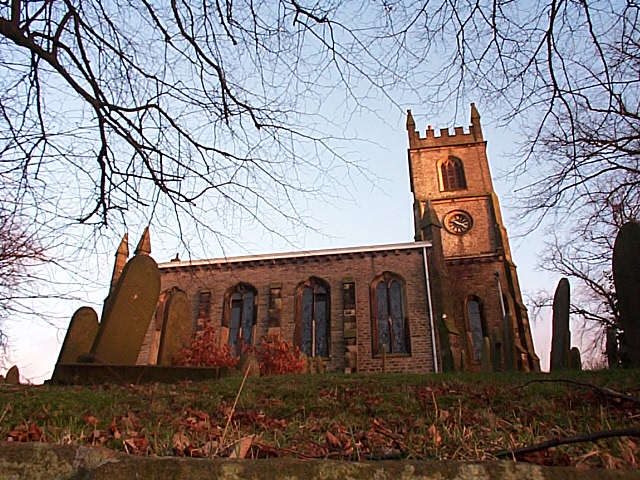
Holy Trinity Church was built in 1846 on land donated by Joseph Harding, and was consecrated in the same year. The builder was John Mellor of Kerridge End (Mellor's also built the famous Cat And Fiddle Inn.) It is in the Gothic style, consisting of chancel, nave and an embattled western tower with pinnacles, containing one bell. Construction costs amounted to £1,800, the first £1,000 came from voluntary contributions and the remainder a grant from the Incorporated Church Building Society. The first incumbent was Rev. George Harrison who lived in the Old Vicarage on Pedley Hill. In 1958 the present vicarage was built next door to the Church.
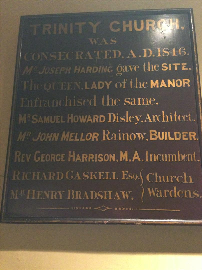
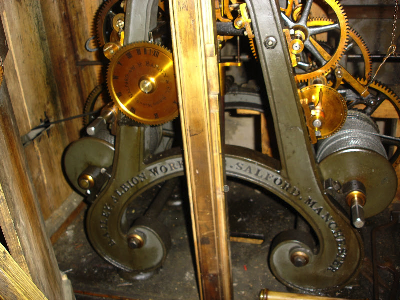
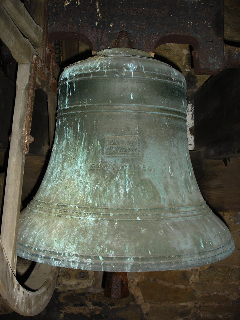
The church clock, manufactured by W. H. Bailey at The Albion Works, Salford was installed in 1877.
The church bell is embossed
"Taylor Loughboro RECAST 1954".
A panoramic view from the Church Tower…
Wesleyan Chapels
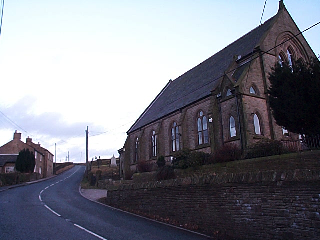
The first Wesleyan chapel was built on Billinge Brow in 1781 as a venue for travelling preachers. The buildings included a cottage to accommodate the preacher and a stable for his horse. The chapel was closed and turned into cottages when in 1808 a successor was built in the village at what became Chapel Brow. This second chapel was later demolished, leaving the Chapel House and its small graveyard when the current Wesleyan Chapel was erected in 1878.
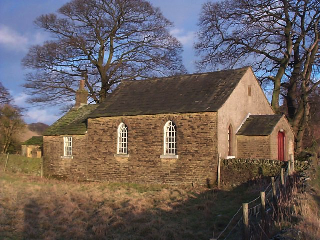
Walker Barn Chapel was built in 1863 and was also used as a Sunday and day school. Miss Phoebe Ann Pownall taught there, and later emigrated to South Africa to become a governess. An inscription above the door informs that it was erected by voluntary contributions. This lovely building continues to hold services once a month.
Schools
The Established Church and the non‐conformist movement competed for 175 years to provide elementary education in Rainow.
The Methodist Schools
In the early 19th Century the Methodists were in the ascendency and dominated the religious life in the village. Following the philanthropic spirit of the age, in 1807 they built a Sunday School just down the road from the chapel to give children from non-conformist families a rudimentary education. In 1820, perhaps with assistance from the British and Foreign Schools Society provision was extended to week days too. This became known as the Township School according to records in the National Archive and in county directories is referred to as the Parochial School. There is circumstantial evidence – from joints in the building's stonework – that they also extended the building at some time.
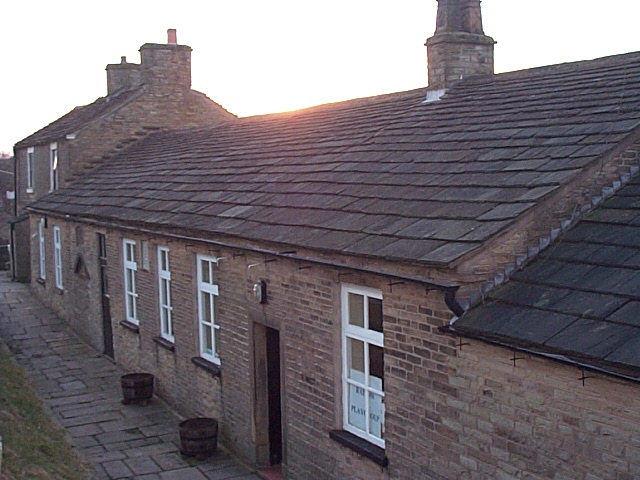
In 1901 not long after a new Wesleyan school was built, the building was repurposed into the village Institute, a venue for meetings and a centre for entertainments such as billiards and cards, dominoes and draughts. By popular demand heating and lighting were installed in 1930.
The Institute remains the principal venue for village activities, being the headquarters for Scout Troops and Guide Companies, the venue for Parish Council meetings, the home of the Preschool (rated Outstanding by Ofsted) and acts as the polling station on election day.
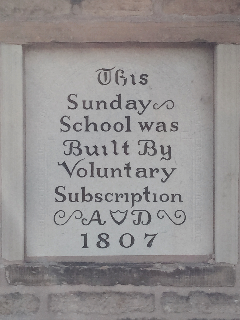
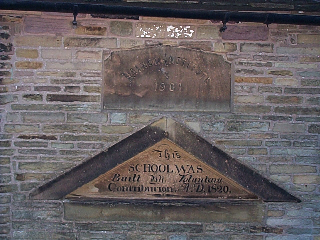
The various incarnations of this versatile building are inscribed on commemorative stones embedded in its southern wall.
- The stone on the left is a modern replica.
- The words on the two stones to the right are:
- Rainow Institute 1901
- This school was built by voluntary contribution AD 1820
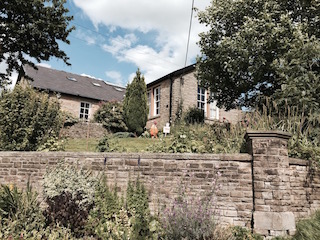
The Wesleyan School was built at the top of Chapel Lane in 1896 as a replacement for the Township school. This was built on land given by James Nixon of Harrop and cost £2,000. It had three large classrooms with tall windows and a kitchen in the cellar to provide school dinners.
The National Schools
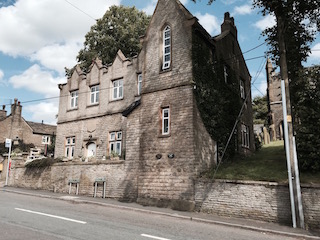
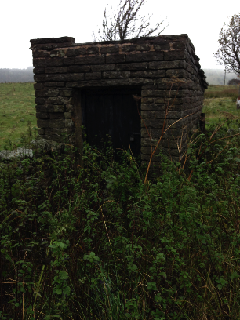
A Church education of sorts was provided at the Episcopal School operating from the rickety Chapel-Of-Ease. However, this was always poorly attended and could not compete with the breadth of education being offered by the Methodists' new Township School.
In 1811 the National Society for Promoting Religious Education was founded to provide an education to the children of the poor in accordance with the teachings of the Established Church. This National Schools movement aimed to establish a school in every parish and Rainow's National Day and Sunday School was built in 1842.
The school house was also a new venue for Church Of England services until the new church was built three years later. It was also the place where The Temperance Society held their tea parties.
Education was encouraged by a National Society subsidy capping the fees to 3d. per week (equivalent to £17 in today's income). Attendance at the National school and the Township school improved considerably once it was made compulsory in 1880 for children aged between 5 and 10 years old.
In 1944, when it became mandatory for schools to provide lunch, hot food was delivered by van from kitchens in Pierce St., Macclesfield. Not long after it was agreed to share the kitchen and dining hall at the Methodist school.
In 1860 a National School was also built in Saltersford, across the road from Jenkin Chapel. It was demolished in the 1920s, but the outside privy is still standing … conveniently.
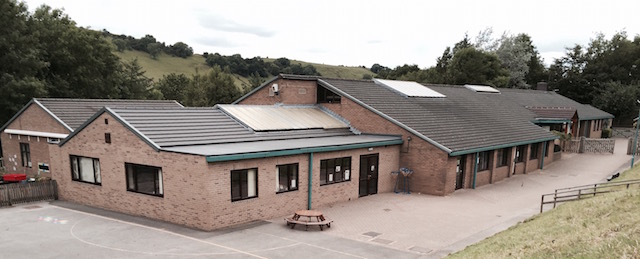
The modern Rainow Primary School opened in November 1984. It was built on a green field site off Round Meadow (formerly Taylor Lane) and cost £250,000. It is a very popular school and educates around 170 children in seven classes in our pleasant rural environment. The lavatories are indoors.
Shortly after this school opened the National and Wesleyan school buildings were converted to private residences, being unsuited for modern educational use.
The Stocks

The village stocks would have been used by local constables as a means of temporary detention and for the punishment of minor transgressions until their use was formally abolished in 1872.
The fact that they stand close by the first school house is probably just a coincidence.
The Poorhouse
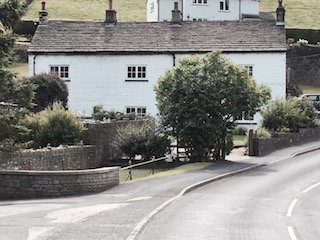
Since the 1601, care of the indigent was delegated to the parish. The elderly, widows and orphans and unmarried mothers were supported by a small allowance paid by the parish in cash or kind, funded by a levy on property. This "Outdoor Relief" often allowed them to stay on in their own homes, but for those who could not, the sick, infirm and unemployed there was the Poorhouse. Millbrook Cottages were bequeathed to the parish in the 18th century for use as a Poorhouse for residents of the parish incapable of looking after themselves. The women in receipt of Outdoor Relief were obliged to take on jobs at the Poorhouse such as nursing, laundry and mending clothes.
The era of the Industrial Revolution saw an increase in population and great fluctuations in prosperity. In hard times the Poorhouse system could no longer cope, so following the Poor Law Act of 1834, Rainow was incorporated into the Macclesfield Poor Law Union. The Poorhouse became the Rainow Union Workhouse and was designated as the refuge for all aged, infirm or imbecile in the Macclesfield Union. Under the new regime, conditions at Millbrook were deliberately unpleasant. As well as overcrowding, the ventilation and drainage were woefully inadequate. The 1841 census return for the Chapelry of Rainow recorded 31 persons crammed in the two small cottages. Following a damning report to the Poor Law Commissioners the Workhouse was closed later that year. Millbrook cottages probably continued to provide shelter to the needy on an ad hoc basis until it was finally closed and sold in 1856. The two remaining occupants were John Potts and John Trunks, both listed as rag-gatherers.
War Memorials
The memorial park dedicated to the men who died in the world wars is at the top of Tower Hill on the east side of the main road.
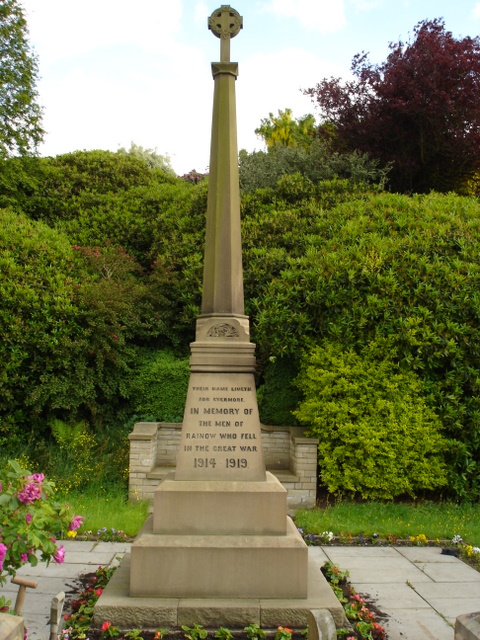
The First World War memorial takes the form of a small celtic wheel cross atop a six metre high tapered pillar and records 37 names. It is built from Kerridge stone, a hard material that is quite difficult to work by hand but very weather resistant, hence the memorial remains in very good condition.
The memorial was designed and built by Rainow resident, Andrew Sutton. A stone mason by trade he was also the Rainow sub-postmaster and lived as you might expect at The Old Post Office Cottage. He died in 1921 from TB at the age of 37. Ever the practical man, he carved his own headstone leaving only his expiry date to be added. His memorial, carved in the form of a scroll, stands in the churchyard.
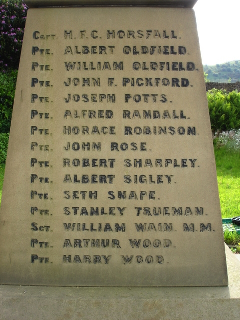
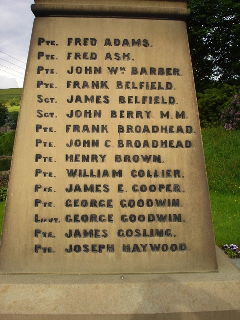
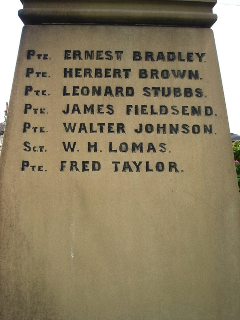
The Commonwealth War Graves Commission can provide more details as to when and where the men fell in battle.
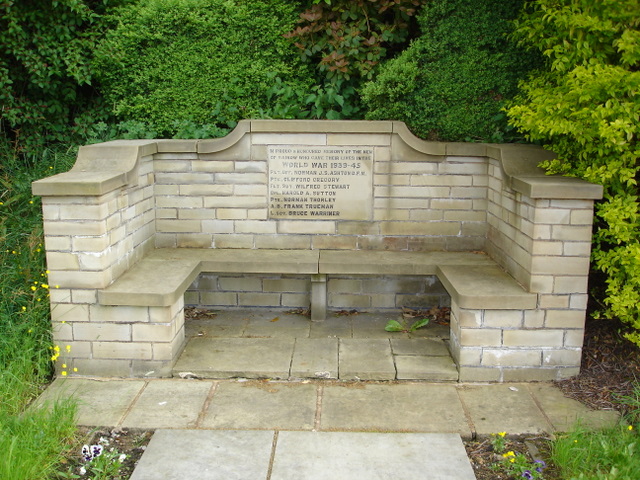
The Second World War memorial is a substantial stone seat and records 7 names on a stone tablet.
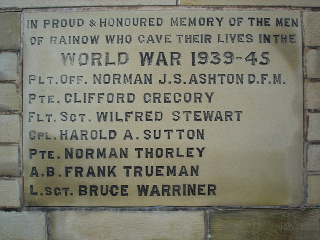
Industry and Mills
Coal
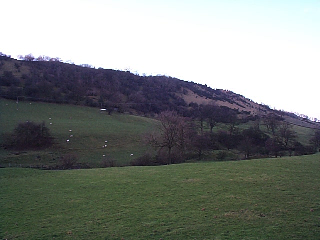
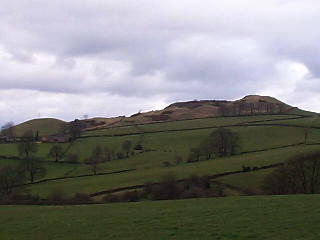
Coal was found on the east side of Kerridge (left) in four seams varying from 9 to 18 inches thick. One of the drift mines was known as the California after one of the Vare family who had taken part in the Gold Rush of 1849. The stretch of the Dean that runs along the foot of Kerridge is still known locally as Cali Brook.
The Quebec drift mines were dug on the upper part of the south slope of Big Low (right), again named after another Vare who had worked in Canada.
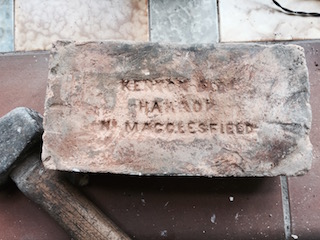
The Kenyon & Co. Brickworks were at Harrop close by a number of nineteenth century small coal and fireclay mines.
Water
During the early part of the Industrial Revolution mills were built wherever a supply of water could be found reliable enough to drive a waterwheel. Consequently, beginning in the 1790's, a number of mills were built over three of the streams that flow through the parish.
Ingersley Vale Mill (1809) was almost famous for having the second largest water wheel in the country with a diameter of 56 feet and buckets 10 feet and 6 inches wide (the largest being the Lady Isabella Wheel at Laxey, Isle of Man with a diameter of 72 feet and 6 inches and buckets 6 feet wide).
Gin Clough
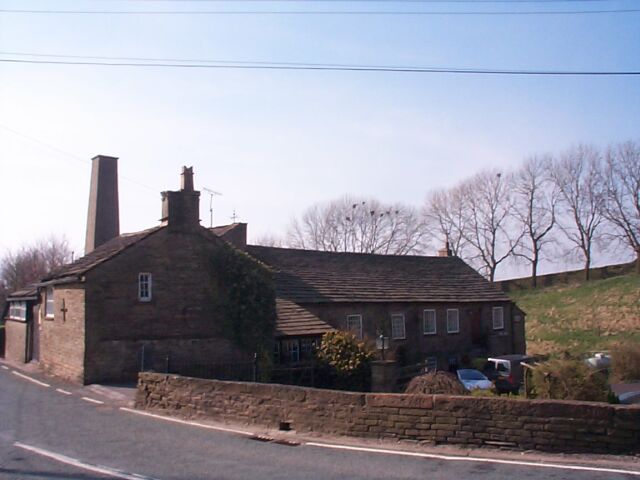
Gin Clough Mill is the only one of the ten mills built in Rainow that is still standing today.
In 1790 Joseph Lowe bought the Gin Clough estate for £300 from Edward Clayton and decided to go into the cotton industry. In 1794 he built a mill two storeys high, 10 yards long by 8 yards wide and fitted it out for cotton spinning. Water to drive the wheel and power the machinery was conveyed from a mill pond through a 6 inch cast iron pipe to a 15 feet diameter overshot wheel housed inside the building's northern wall. When Lowe died the Cotton Factory passed into the ownership of his son Joseph jr.
In 1823 the mill was sold at auction to Thomas Cooke who doubled the length of the mill and converted the machinery for silk throwing before putting it out to let. This extension meant that the waterwheel was now located in the centre of the building. In 1825 the mill was leased by David Rowbotham and in 1837 by James Sharpley, both described as silk throwsters. Sharpley was also the first Registrar for births and deaths and he continued to reside in the mill cottage until at least 1874. A steam engine was subsequently installed some time before 1833.
In 1865 John Maybury was recorded as running the mill and in 1869 the occupant was Peter Vare. However, in the census of 1871 the mill is listed as 'empty' and ten years later as 'in ruins'. The mill was subsequently bought by Thomas Rowbotham in 1893 who ran a joinery shop with his sons William and Thomas making carts and coffins. The mill was bought by Jack Leigh around 1950 and, for the next sixty years it was the workshop for John Leigh & Sons, a dairy engineering business.
Water power has recently been restored to the mill with the fabrication and installation of a new 15 foot diameter waterwheel that drives a micro hydroelectric plant.
Decline
The decline of industry in Rainow began with the advent of steam power, continued with the digging of the Macclesfield canal and was completed by the coming of the railways. The steam engine meant that mills were no longer reliant on a natural water supply to drive the machinery; the canal provided cheaper, more convenient ways to bring in raw materials and distribute the finished products and the railway brought cheaper and better coal from the north Staffordshire mines. New cotton mills were built in Bollington along the line of the canal and the railway. The drift of capital and labour to Bollington was irreversible. In 1801, Bollington had a population of 1,231 versus 1,390 in Rainow, but seventy years later it was 5,040 and 1,316. In the early 20th century most people who lived in Rainow walked to and worked in the mills of Bollington. In 1961 the village's population had dropped to 1,005.
Lamaload Dam
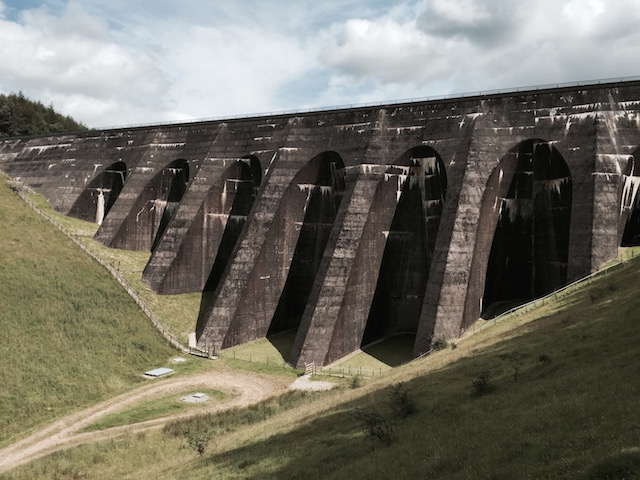
Construction of the Lamaload Waterworks was undoubtably Rainow's biggest industrial enterprise. The dam and treatment works were built by Costain between 1958 and 1964 and cost £475,000. Before work could begin a 2 km access road had to be laid down throughout the winter of 1956-7. Along this, army surplus troop carriers delivered the workforce to site and helped haul the huge drag line cranes into place. The project also required the demolition of Lamaload Farm and the evacuation of Lower Ballgreave and Lower Hooley farms.
On 26 May 1961, during the construction phase, there was a site visit by Princess Alexandra, the Queen's cousin - perhaps the first and only time a member of the royal family has been to the village. Whether she arrived by troop carrier or Rolls Royce is unclear, though a commemoration stone near the top of the south-western end of the dam records her visit.
The princess would have been informed that the round head buttress dam is 180 metres wide, 60 metres high (590 x 200 feet) and was the first in England to be made entirely from concrete.
The retained reservoir is fed by the River Dean and a rainwater catchment area of around 400 hectares (1,000 acres). When full it holds 1.9 billion litres of water equivalent to 760 Olympic size swimming pools which is enough to supply Rainow for 30 years … or London for 36 hours.
Legends
Mystery of John Turner
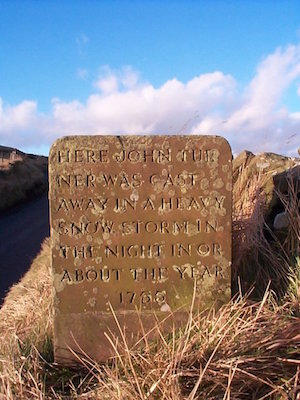
In 1735 the pack horse driver John Turner was returning home to Saltersford on Christmas Eve when a blizzard was raging. A search party discovered his frozen body less than a mile from home - his pack horses were dispersed but unharmed. The riddle surrounding his death, however, is that a woman’s single footprint was found next to his body. James Mellor jr. fixed a memorial stone in Ewrin Lane, below Buxter Stoops, recording this mysterious phenomenon. At some time the stone was replaced, but the year 1755 was given in error.
Here John Turner was cast away in a heavy snow storm in the night in or about the year 1735
Obverse
The print of a woman's shoe was found by his side where he lay dead
Reverse
Witches
Two Rainow women, Ellen Beech and Anne Osboston, were hanged after the 1656 Michaelmas Assizes at Chester for practising "certain arts from which wicked and devilish acts certain people of Rainow fell ill and died". Elizabeth Johnson of Ranowe was also sent to trial but acquitted because the evidence against her was insufficient.
White Nancy
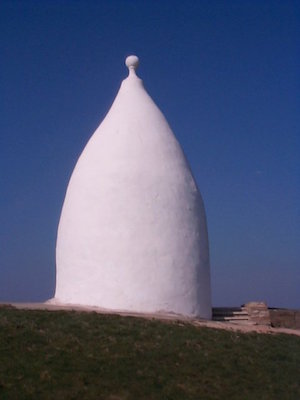
On the northern end of Kerridge ridge is a prominent white building, circular in cross-section in the shape of a sugar loaf known as White Nancy. White Nancy was built sometime before 1824 to commemorate the battle of Waterloo (1815). It was used as a summerhouse, white-washed from the beginning, but painted green during World War II so as not to provide a landmark for enemy aircraft. The boundary line dividing Rainow and Bollington passes through the middle of the building, placing White Nancy in both parishes.
The reason for the name Nancy is a mystery. One suggestion is that it was simply a contraction of 'ordnance' alluding to the beacon previously on the site. Before White Nancy was built the site was occupied by a beacon described as a small rotunda of brick. Such beacons were erected on high points across the land in which fires could be lit to warn of invasion.
Amusements
The Club of Walks
Before The Great War most events were celebrated by a procession through the village. The 'Club of Walks' was held annually by the Church of England Friendly Society (the Old Club) and the Oddfellows Friendly Society (the New Club). The Oddfellows procession was held on the first Wednesday in June and the Church of England's on the first Wednesday in July. The processions formed at The Horse and Jockey public house and were led by the Rainow Brass band on a two mile walk to Kerridge End and back. A hearty meal of roast beef and plum pudding was then consumed, washed down with plenty of ale.
Rainow Wakes
Rainow Wakes falls on the third Sunday in October when, by tradition, the village mayor is elected. The office has no executive power, but the election was an eagerly awaited and farcical proceeding and a good excuse for a procession and a party. The following poster from 1877 gives a flavour of the event:
RAINOW WAKES Celebration of the old and ancient custom of Rainow. The election of the Mayor of Rainow for the ensuing year will take place on Friday, the 18th October 1877. Proposed candidate James Duffield Esq., Hawkins Lane. Grand torchlight procession, accompanied by Rainow Brass Band, will start from the Township School to Kerridge End and back at half past seven o'clock. Mayor's feast at 8 o'clock sharp. Admission by ticket only which can be obtained from The Blacksmith's Arms, The Robin Hood, The Horse and Jockey, The Rising Sun and The Plough. Persons desirous of joining the procession can do so by applying to any of the committee. To conclude with a grand display of fireworks.
When the mayor was chosen he was dressed in a red robe, an immense chain of office and a hat with various colours of ribbons then seated upon a donkey facing the tail end. The procession would then begin. On the journey they called at every inn and the mayor was provided with liquid refreshment.
In modern times the procession is still well attended, but slightly less boisterous. Take a look at some 21st century parades here.
The mayor is now elected at the village fete held each July and treated with more respect. The fete also perpetuates the local fell race known as the Kerridge Climb which involves running to the highest point of Kerridge - without oxygen - and back down. Only one mile in distance, but mostly vertical.
Local Sayings
- "If the wind and women were quiet, things were never much amiss."
- "All great men are dead, and I don't feel very well myself."
- "Rejoice in the hills and the moving sky but eat when you’re hungry and drink when you’re dry."
- "Enough is as good as a feast."
- "First up, best dressed."
- "When it's gone, it's gone."
Maps
These detailed maps were drawn by Mrs. Meecham especially for The Story Of Rainow book.
Present Day
If you are interested in how the village lives in the present time, these web sites will be helpful.
-
www.rainowvillage.co.uk
The Parish Council is the branch of local government that oversees the built and natural environment of the village. It is responsible for bridleways and footpaths, bus shelters, open spaces, community transport schemes, litter bins, planning applications, street cleaning, tourism activities, traffic calming measures and much more.
-
www.rainow.com
The Raven is the village's award-winning quarterly magazine. First published in 2007 as an output of the parish plan, it provides a regular insight into a dynamic modern village.
-
www.kriv.org.uk
Kerridge Ridge and Ingersley Vale is an active community project that, over the past decade, has done some sterling work on the industrial history, geology and ecology of the western side of the village.
Bibliography
Click the book title to view an online copy where available.
-
A Village History
Rainow Women's Institute, 1952.
Printed by Fredk. J. Smith, Chestergate. -
The Story Of Rainow
Rainow Women's Institute, 1974.
Based on information collected by Wilfred Palmer, with additional material by Mrs. Carne & members of the Rainow W.I. and maps by Mrs. Meecham.
Available by kind permission of the Rainow W.I.
Printed by TILLS, Macclesfield, Cheshire. -
St. John The Baptist, Saltersford
Uncredited, 1977.
-
Rainow: Caught In Time, Images Of An Upland Village
Rainow History Group, 2014.
ISBN 978-0-9553291-0-4 -
Patchwork, Volume 1
Rainow History Group, 2014.
ISBN 978-0-9553291-1-1 -
Patchwork, Volume 2
Rainow History Group, 201?.
ISBN 978-0-9553291-2-? -
Patchwork, Volume 3
Rainow History Group, 2018.
ISBN 978-0-9553291-3-5 -
Rainow, A Short History Of The Village And Some Of Its Worthies
Joseph Mottram, 1936.
Transcribed by Kay Fussey. -
Seventeenth Century Rainow: the Story of a Cheshire Hill Village
Jane Laughton, 1990.
-
The Gaskells Of Ingersley Hall
Bridget Franklin, 2016.
ISBN 978-1-5262-0439-4 -
The History And Hulley Families Of The One House, Rainow
Ray Hulley, 2015.
ISBN 978-0-9540-3141-1 -
The Jottings Of Some Geological, Archæological, Botanical, Ornithological And Zoological Rambles Round Macclesfield
J. D. Sainter, 1878.
Printed by Swinnerton & Brown, Macclesfield.
